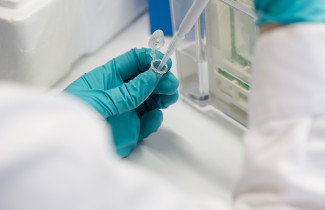Stereotactic body radiation therapy SBRT and low dose-rate brachytherapy LDR-BT are both safe and efficient in the treatment of localised prostate cancer, according to the doctoral dissertation of Kristiina Vuolukka, Lic Med.
Prostate cancer (PCa) is the most common solid tumour of Finnish men with the vast majority of cases being diagnosed at an early stage. Several treatment modalities are available for localised PCa; watchful waiting, active surveillance, androgen deprivation therapy, radical operation or radiotherapy. The prognosis of low and intermediate-risk PCa is excellent, irrespective of the initial treatment modality. The prognosis among high-risk patients is poorer as the more aggressive histology often tends to evolve into metastatic disease and subsequentally increased mortality.
Traditionally, external beam radiotherapy (EBRT) of PCa has been delivered with linear accelerators in a conventional fractionation of 2 Gy per fraction, one fraction per day and five fractions per week. Due to the high tolerance of PCa cells to radiation, EBRT with curative intent demands a high total dose, 76 - 78 Gy, and hence the duration of conventionally fractionated EBRT lasts nearly two months. Research on radiobiology has shown that the cell biology of PCa differs from several other cancers and the delivery of radiation with larger fractions (i.e. ultrahypofractionation) could be advantageous in terms of efficacy.
For the avoidance of acute and late adverse effects, the surrounding healthy tissues (i.e. bladder, urethra, rectum), need to be protected from unnecessary irradiation. Hence, the safe delivery of large fractions of radiation requires very exact targeting. Image-guided radiotherapy devices guarantee the precise targeting by imaging also during the treatment. Image-guided radiotherapy delivered in only a few fractions is called stereotactic body radiation therapy (SBRT). SBRT of PCa can be delivered in a shorter time frame, i.e. in five fractions of 7 Gy to the total dose of 35 Gy on alternate days. As a result, the duration of the treatment is often less than two weeks.
Radiotherapy of PCa can be delivered also with radioisotope sources implanted into the prostate gland. Low dose-rate brachytherapy (LDR-BT) is delivered in a single session under general anaesthesia. Several needles with radioisotope sources, i.e. I125 seeds, are inserted into the prostate under transrectal ultrasound guidance and the dose distribution covers the whole prostate gland. In LDR-BT, the range of the radiation to the surrounding organs is short, resulting in a low incidence of acute and late toxicity. The single dose of LDR-BT ranges between 140 Gy to 150 Gy and the efficacy and safety among low and intermediate-risk PCa patients have been confirmend in several studies.
Kuopio University Hospital (KUH) started to provide SBRT for localised PCa in 2012. Study I of this dissertation analysed the early urinary and rectal toxicity and early efficacy of SBRT with the median follow-up being 23 months in a cohort of 218 PCa patients treated during 2012 – 2015a and Study IV analysed the efficacy with the median follow-up of 5.3 years. In KUH, LDR-BT was implemented in 1999 and in Study II of this dissertation the long-term efficacy and late severe urological toxicity were analysed in a cohort of 241 PCa treated during 1999 – 2008 with the median follow-up of 11.4 years. In Study III, the incidences of subsequent primary cancers and radiation-induced subsequent primary cancers were analysed within the same cohort.
SBRT monotherapy or in combination with androgen deprivation therapy does provide an efficient, safe and a convenient treatment option in localised PCa; in the 5-year update, the efficacy was excellent, also among patients at high-risk. The efficacy of LDR-BT was shown to be long-lasting during the follow-up time of over 11 years and 90 % of the patients avoided sever late urinary toxicity. The incidence of second primary cancers was in the same order of magnitude as the cancer incidence among a similar aged general Finnish male population and there was a very low risk of radiation-induced subsequent primary cancers. In the light of the results of these studies, it is concluded that both of these targeted radiotherapies, SBRT and LDR-BT, are safe and efficient treatment modalities.
The doctoral dissertation of Kristiina Vuolukka, Licentiate of Medicine, entitled Targeted radiotherapy in prostate cancer, will be examined at the Faculty of Health Sciences. The Opponent in the public examination will be Dr Nicholas van As of the Royal Marsden, and the Custos will be Docent Vesa Kataja of the University of Eastern Finland. The public examination will be held in English online on 12 February 2021 starting at 12 noon.



